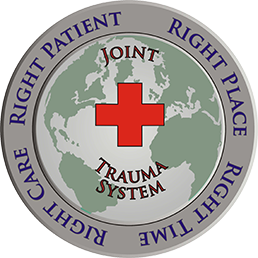JTS Helps NATO Nations Build Trauma Care Systems
The Joint Trauma System (JTS) is mentoring the North Atlantic Treaty Organization (NATO) nations building combat casualty care programs through the NATO Military Healthcare Working Group (MHCWG). The mission of the MCHWG is "to initiate and develop common principles, policies, doctrines, concepts, procedures, techniques, programs, and initiatives in the military health care field… (and) develop evidence-based NATO military healthcare advice in order to advance clinical policy, develop common professional medical techniques and standards, and ensure continuous quality improvement."
With 28 European and two North American nations, and a successful record of maintaining collective security since 1949, NATO is perhaps the most important strategic partner for the United States. As an alliance of sovereign nations that does not fall under a structure of command and control unless under wartime footing, NATO is a coalition of the willing. JTS has worked with NATO military medical committees in the past, including the Blood Panel. The Blood Panel is working on blood interoperability within the alliance– an essential process with growing impact. JTS has made notable contributions to the program; JTS Chief COL Gurney and JTS Deputy Chief Dr. Mary Ann Spott are key contributors.
The MHCWG is subordinate to the Committee of the Chiefs of Military Medical Services in NATO (COMEDS), which includes Maj Gen Paul Friedrichs, the U.S. Joint Staff Surgeon and supporter of JTS. The MHCWG has several subordinate NATO panels for military medicine, including the Emergency Medicine Panel, the Special Operations Forces Medicine Panel, and the Blood Panel.
This past fall CTS Operations Branch Chief Col Baker attended the 34th meeting of the MHCWG in Aarhus, Denmark. An important agenda item was the adoption of the Tägerwilen 2 Report for advancing pre-hospital care improvement initiative priorities and concurrence to publish as a Standardization Recommendation. The soon-to-be-published report expands on four critical priorities: Tactical Casualty Care, Blood Far Forward, Forward Surgical Capabilities, and Prolonged Casualty Care. In every priority, JTS publications including DeployedMedicine.com and JTS.health.mil were listed as the primary resources to the allied nations for developing their own combat casualty care programs.
Several days were spent working on updates to Allied Medical Publications including Allied Joint Military Healthcare Doctrine, which provides guidance to the allied nations for emergency surgical care and healthcare personnel training in support of NATO operations. None of the allied nations are as large as the U.S. or have resources in close enough proximity to conduct evidence-based performance improvement. As sovereign states, these nations are not obligated to follow NATO military medicine doctrine; their medical and clinical leaders look to it in the same way that we often look to DoD instructions and other policy documents as helpful tools to drive funding, priorities, and decisions. In other words, if it's not written, it can't happen.
With NATO European nations on the frontlines in Eastern Europe and comprising two-thirds of overall Allied forces, JTS' contribution to NATO military medical doctrine is invaluable. For instance, JTS helped revise the NATO Field Medical Card to contain the same data elements as the TCCC card (DD 1380).The MHCWG recognized this recently and formally voted to add JTS to its members as an Advisory Liaison Officer with the responsibility to provide updates on advances in combat casualty care and to ensure that the Standardized Agreements updated by the MHCWG are consistent with the best advice. With strategic impact directly linked to its mission, this is clearly in the JTS' wheelhouse.
On the home front, JTS managers are working out the legal, logistical, and technical challenges associated with new NATO agreements. The agreements would expand the JTS' ability to collect more and different types of data, as well as data-sharing options. Canada, the United Kingdom, Japan, France, Poland, and Ukraine have all expressed interest in the initiative, and DHA leaders have asked JTS to start with Canada and NATO. The end goal is to help them build trauma registries with interoperability features alongside the JTS DoD Trauma Registry to boost sharing of data.
JTS already collects some trauma care data on NATO patients. The agreement would increase the amount of NATO patient care data JTS and NATO collect for performance improvement analysis. JTS also has individual agreements with NATO members, including Canada, and has shared DoDTR data with the Canadians in the past. Most recently, JTS provided a temporary store-and-forward product with a singular remote refresh export of all Canadian records.
Creating international DoDTR interoperability presents unique challenges. Different nations have their own standards for creating and maintaining patient records. These differences create challenges for ensuring data consistency and uniform quality assurance in DoDTR. In addition, there are security and privacy concerns surrounding passing sensitive patient information across different countries. JTS is working to resolve proper model/configuration, implementation, IT support, and security to ensure patient privacy and quality assurance. There's much to do on the back end before the era of expanded data sharing begins.
"NATO is the most powerful alliance in the world and critical for the security of the United States, said COL Baker. "The role of JTS in NATO working groups like the MHCWG will be critical to saving lives on freedom's frontlines, far from our homeland."

